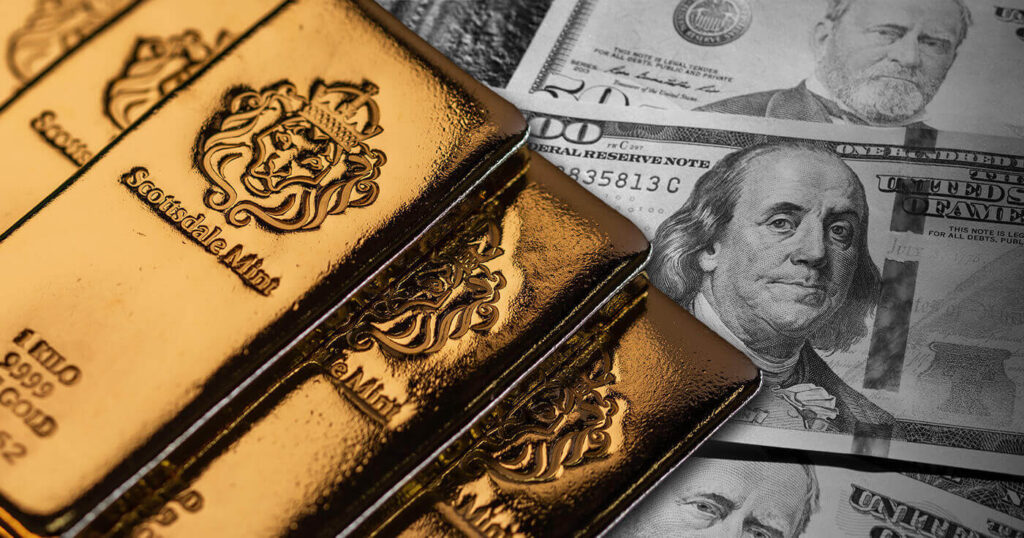
Simply said, the gold standard system is when the government links the value of its paper money to its gold reserves. Under the gold standard, the government defines the weight of gold connected to a single dollar. A country that uses the gold standard sets a fixed price for gold, while also buying and selling gold at that rate. For example, if the US were to set the price of gold at $200 an ounce, $1 would equal 1/200 of an ounce of gold.
How Does it Compare With Our Current Monetary System?
In the United States, and every other country on this planet, governments have either abandoned or never adopted the gold system. In our present day, there is no currency backed by gold.
So what makes a dollar worth a dollar?
Well… nothing.
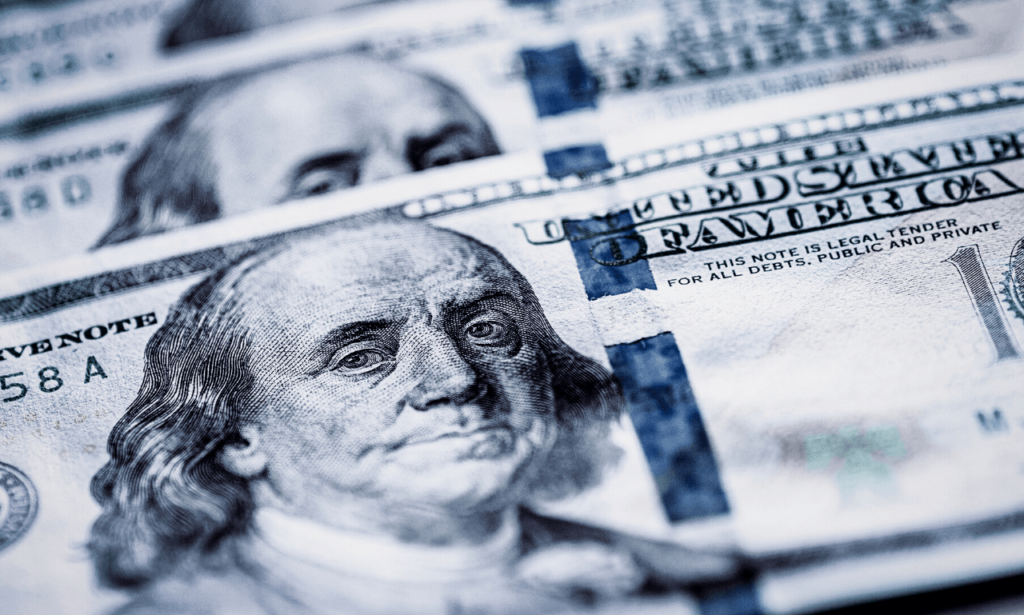
It’s a fiat currency. Fiat means that it’s not backed by any physical asset, in the past that physical asset would have been gold. What makes the dollar worth a dollar is the fact that it’s backed by the U.S. Government’s complex system of securities and holdings. This topic deserves its own article or two. It’s not a simple question to answer, as it’s far from black and white.
How and When Did the Gold Standard Start?
This may be surprising to some, but gold was not the first precious metal used as currency. The silver standard pre-dates the gold standard by a long shot. Going back to the Sumerians in 3,000 B.C. – one of the earliest civilizations in Mesopotamia. The use of gold and silver as legal tender, also known as the bimetallic standard was common in early civilizations – dating back to around 550 BC. Without getting into the weeds around various standards, let’s stick to gold.
The move from the silver to the gold standard began in the 18th century.
Sir Isaac Newton, the esteemed mathematician, theologian, astronomer, and the “apple fell from the tree” guy. The inventor of calculus (how do you invent math?) and most known for his theory of gravity – he was also responsible for what would become the international gold standard. In 1717, Sir Isaac Newton, then-master of the Royal Mint, set the exchange rate in favor of gold. During this period, England was using a bimetallic standard. Merchant and traders began to swap their gold for silver coins. This eventually led to a dramatic reduction of silver in circulation. Which caused silver prices to become more volatile, while the price of gold remained stable. The economy didn’t flip flop overnight, but it did lead to the eventual official gold standard.
The First Gold Standard
In 1816, the Royal Mint introduced the Sovereign coin, which led to the establishment of the first gold specie standard in 1821. Its value was directly tied to the amount of gold coins in circulation. This differs from the gold standard, in that it uses actual gold coins rather than notes.
Other countries began to follow suit – Canada in 1853 and Newfoundland in 1865.
The US officially adopted the gold standard in 1873, with the introduction of the Eagle.
Before diving into the history of the U.S. gold standard, let’s cover some pros and cons of this monetary system.
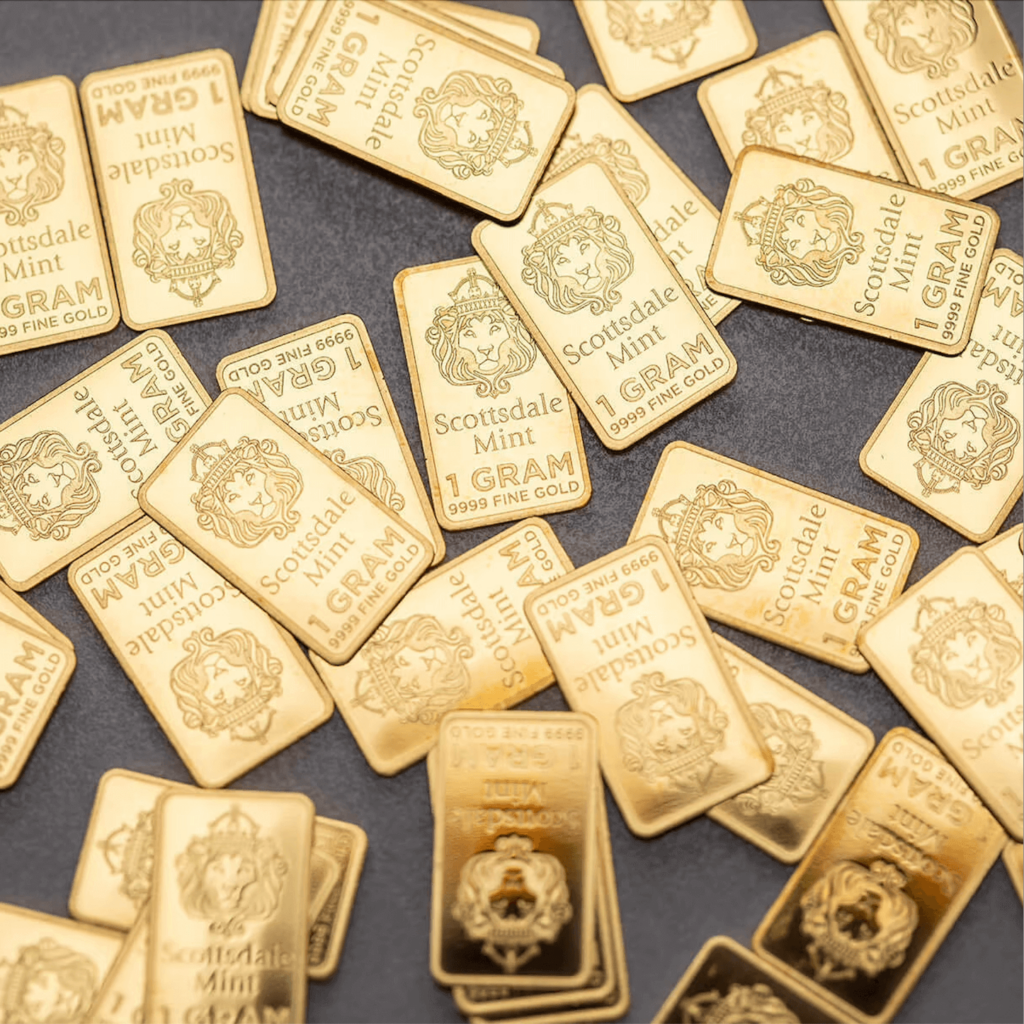
Pros of the Gold Standard
- It’s self regulating – there’s only as much currency as there is gold to back it up. This also makes exchange rates a lot easier to deal with.
- Restricts governmental power – if the gold isn’t there, then there’s no willy nilly printing. This would help keep government spending in check, rather than ramping up the national debt.
- Increase stability – with there being a limited amount of gold, the accumulation of unlimited debt would be tough to keeping racking up. One thing is for sure, the U.S. debt ceiling wouldn’t be so high.
Cons of the Gold Standard
- Volatility – this seems to be an unescapable problem. Depending on gold demands, and availability, there may be more price instability.
- Restricts governmental power – recession, depression, national security… the gold standard would limit their ability to provide financial aid in these situations.
When Was the US on the gold standard?
Originally, the United States was on the bimetallic standard (gold and silver as a monetary unit) starting in 1792. Under President Washington, The Coinage Act of 1792 was passed by Congress, which established the first mint – U.S. Mint in Philadelphia.
Prior to the Coinage Act, the Continental Congress issued Continentals – paper currency used to fund the American Revolutionary War. These Continentals were not backed by gold or any other physical currency. The colonies and Congress began printing money like madmen to cover the war expenses. This flood of fiat currency led to the depreciation of these Continentals. To fix this mess, the U.S. Constitution gave Congress the exclusive right to coin money. And so here comes the Coinage Act of 1792.
It’s easy to get lost in the sauce here, and this article is meant to be somewhat concise. Entire books have been written about the U.S. monetary system, so let’s jump ahead…
The “Crime of 1873”
President Ulysses S. Grant signed into law the Coinage Act of 1873, which cleaned house on the structure of the Mint, and also recommended moving the U.S. from bimetallism to the gold standard. The idea being that it would help standardize currency across borders.
Silver was demonetized.
Keep in mind, this was long before the 24 hour news cycle. Most of the public had no clue that the act passed, or that it even existed. The public didn’t catch wind until the miners had brought their silver in for minting. It was no longer accepted. Chaos ensued. This ultimately caused chaos for the working class. They had no way of paying their debts back with the silver they were holding, as their silver currency became “worthless” overnight.
It’s similar to playing a game with someone… but they are making the rules as it goes on. Whatever you try to do, you’re not going to win.
As you could’ve guessed, this didn’t just blow over. In order to keep the miners and silver supporters at bay, the Bland-Allison Act of 1878 required the Treasury to buy up to $4 million in silver from the miners each month. Obviously, this was not the solution.
Shortly after, the U.S Mint stopped all silver production and silver as payment became obsolete.
The Birth of The U.S. Gold Standard – 1879
During this period, the government not only issued gold coins but also gold certificates. These functioned like an “I owe you”. As the owner of the certificate, you had the right to the gold on demand. Rather than carrying around stacks of coins, you could simply put a slip on your pocket. Banks issued gold certificates and were required by law to have a specific amount of bullion on hand. Nowadays, I think most would prefer the coins.
In 1880, the U.S. Government issued the Treasury Note under the Sherman Silver Purchase Act. Unlike the above mentioned gold certificates, Treasury Notes were redeemable for coin – rather than specifically silver or gold. This meant the Treasury could fulfill the note in either silver or gold coin. What’s the point of that? Well, the Treasury could release silver and gold coin relative to their value. In theory, that would help ease inflationary issues. That lasted until 1893.
Gold Standard Act of 1900
The U.S. Government was tip-toeing around, “here’s some gold but also some silver for your notes”. We’ll say this, the Treasury Notes were a bit confusing.
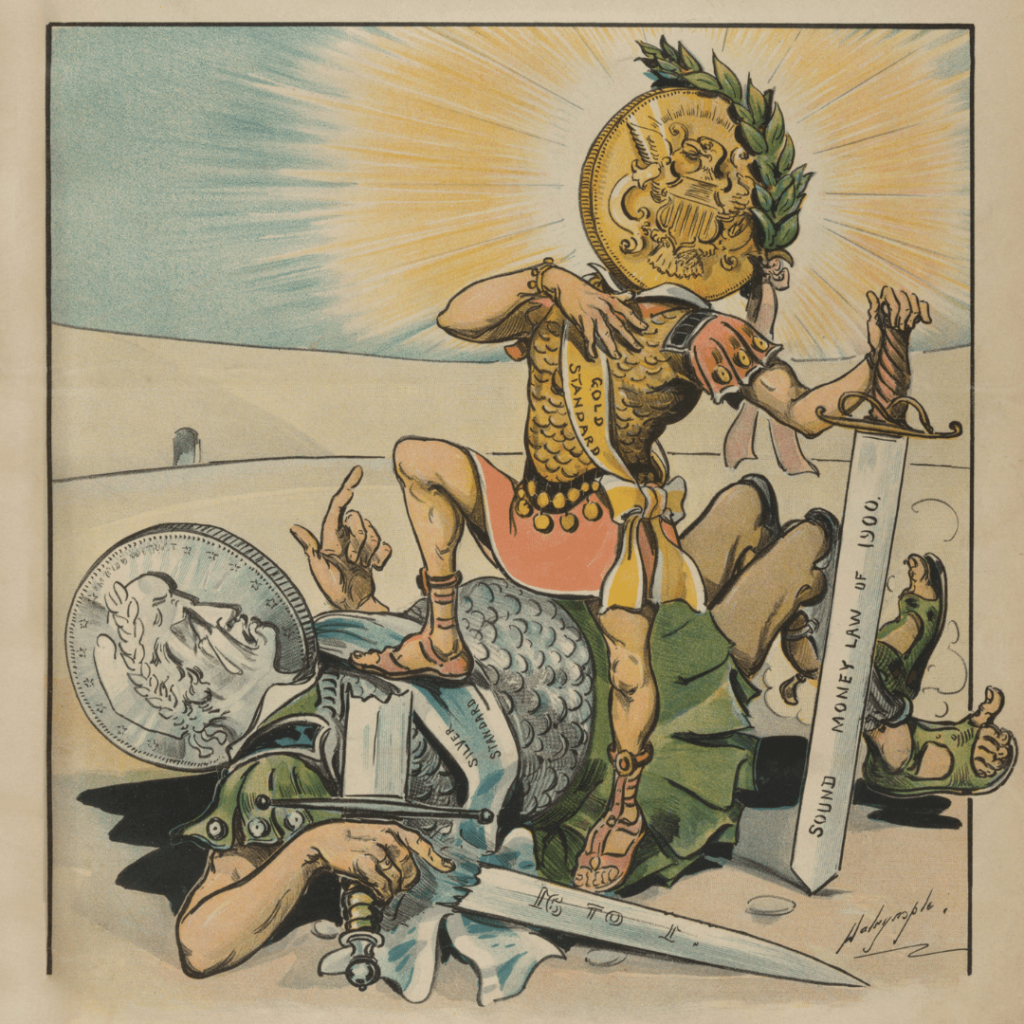
The Gold Standard Act officially established a gold reserve for the nation’s paper currency. Luckily, whatever silver was in circulation didn’t get wiped out overnight. Silver dollars, certificates and greenbacks were still redeemable for gold. Eventually, these forms of currency were taken out of circulation. With the official Gold Standard enacted, the Treasury notes were discontinued.
How Did The Federal Reserve Impact The Gold Standard?
First off, why even create the Federal Reserve?
Before the “Fed”, people were using smaller state banks. Now that notes were no longer in circulation, checks became popular. Most transactions were settled by canceling debits with credits. Therefore, most banks only had a fraction of the money supply compared to the checking deposits. As you can imagine, this became their Achilles heel. If there were to be a run on a bank (customers demanding cash from their checking accounts), banks would be squeezed until failure. If one bank failed this would create a cycle of panic, causing more banks to be drained. These boom and bust cycles would lead to eventual depressions. The economy was in desperate need for a tune up.
1908, The National Monetary Commission
Following the bank panics of the late 19th century (and into the 20th), Congress established the National Monetary Commission – with the goal to study the banking laws of the U.S. in comparison to the leading countries of Europe. A team of experts were led to major European capitals, and were dumbfounded by how much more efficient the European financial system appeared to be, and how their currencies had more leveraging power than the dollar in international trade. The Commission’s reports and recommendations became one of the leading voices in the creation of the Federal Reserve Act of 1913.
The Federal Reserve Act of 1913
Federal Reserve Act ushered in the Federal Reserve. Signed into law by President Woodrow Wilson, it’s one of the most influential laws over our financial system to this present day. In theory, the Fed was able to calm panics in one of two ways: (1) Banks are able to borrow in times of a squeeze when customers are clamoring for cash. (2) By creating money in the form of Federal Reserve Notes, the Fed is able to control the supply of money in the economy.
Did The Creation of the Federal Reserve End the Gold Standard?
The creation of the Federal Reserve had no effect on the gold standard, as the dollar was still defined in terms of gold. During this time, the Fed operated under the gold reserve and was in charge of maintaining it.
World War I: End of the International Gold Standard
During the first World War, the U.S. and other belligerents either fully or partially suspended the gold standard, so that it wouldn’t put a blockage on their war efforts. There was a need for cash flow. In order for a country to function on the classical gold standard, they needed the ease of convertibility between gold and notes – this also means allowing for gold to easily flow across borders. In the beginning of the war many prominent European countries went off the gold standard and this disrupted the U.S. financial markets. However, the U.S. kept its’ gold convertibility open during the war, but paused gold exports.
The End of the U.S. Gold Standard
No More “Gold Hoarding”
From 1930-1933, banking panic was prevalent. This societal despair led to a series of bank runs and failures. As a quick fix, the gold standard ceased to exist.
Initially, the Fed was created to prevent such failures from happening, but there was not enough liquidity in the public system, hence the meltdown. Part of the blame could be shifted to the gold standard. If the Fed were to stop the bank panics with the printing of more paper money, it would have lost the public trust in gold. These doubts would have led to even more exports of gold, as investors were looking for higher returns. An increase in exports would decrease the gold holdings and make it more difficult to remain on the gold standard.
Emergency Banking Act
In 1933, President Roosevelt ordered all gold coins and certificates of more than $100 to be turned in for other money. Everyone was ordered to turn all of their gold bullion to the Federal Reserve for $20.67 per ounce – what a steal…quite literally. It became popular to do a bit of “midnight gardening”. In other words, people began to bury their precious metals. These newly acquired assets allowed the Federal Reserve to further inflate the nation’s money supply.
The Emergency Banking Act essentially nationalized gold. Meaning, the state “owned” all gold.
Semi-Gold Standard
Under the Gold Reserve Act of 1934, all gold held by private citizens, and institution (including the Federal Reserve) was to be transferred to the United States Treasury. Banks, financial institutions, nor the Fed could exchange U.S. dollars for gold.
Effectively, gold was converted from a currency into a commodity. The U.S. continued to define the dollars as being backed by gold. However, transactions with gold were only happening with other countries’ central banks. For the average American citizen, the dollar being backed by gold had no real legs to stand on.
International Monetary System
Or also known as the Bretton Woods system, after World War II countries agreed to keep their currencies in line with the dollar – and the dollar was fixed to gold. This meant that the U.S. was responsible for maintaining the dollar price of gold fixed, and therefore had to keep a close eye on the supply of dollars for future accountability.
At first, this seemed like a great plan, as the U.S. held about 75% of the world’s gold reserves. By the 1960s, Europe and Japan had an economical resurgence after recovering from World War II, which flooded the market with their exports. The U.S. was not on the same playing field, economically, and so their dollars became less desirable. During this time it made more sense to convert those dollars to gold.
With less transactions happening between the U.S. and other governments, coupled with military funding and foreign aid – there was a surplus of dollars. That wouldn’t be such a problem if domestic gold holdings increased alongside, but that was not the case. Now that there were more dollars held by other governments than U.S. physical gold holding, the U.S. was in danger of a run on gold. If that were to happen, it would completely derail the U.S. dollar as the reserve currency.
The London Gold Pool
From 1933 to 1974, it was illegal for U.S. citizens to hold gold. Even though there was no private market in the United States, this was not the case abroad. Which made gold ripe for deviating outside the official currency value in foreign markets. In 1960, a run in the London gold markets sent the price of gold soaring to $40/ounce. To fix the issues, the London Gold Pool was created. It consisted of eight central banks , who agreed to pool together their gold reserves to keep gold at $35/ounce. This was necessary to function within the Bretton Woods System.
As can be guessed, the London Gold Pool was not the answer. Shortly after, the British pound devalued and another run on gold occurred. It became obvious that the gold pool had some leaks. France withdrew, and the London Gold Pool collapsed soon after.
Welp, it was an attempt to withhold the gold standard.
Bye Bye Gold Standard
The Nixon Administration, in 1971, declared that it would not convert dollars to gold at the present exchange rate – this was meant to be a temporary hold. This move by Nixon, led to the creation of the “Smithsonian Agreement” The U.S. dollar was devalued from $35/ounce to $38/ounce, and other countries followed suit in adjusting their currencies relative to the U.S. dollar. This agreement did not hold for long, by 1973, most major currencies shifted to a floating exchange rate.
For the average citizen, the gold standard did not play any role in their lives for quite some time now, and in 1976, the gold standard officially ended. The dollar would no longer be defined by gold. It’s fiat currency from here on out.
Fiat Currency and The Role it Plays
Since the collapse of the the Bretton Woods System, central banks and governments have been boosting spending as deemed “necessary”. There’s no accountability, and the elephant in the room continues to be ignored. Due to loose fiscal policies since dropping the gold standard, the dollar has lost over 83% of its purchasing power. This is due in combination to low interest rates, excessive money printing and the overall effect of running a financial system with no repercussions. In order to correct this course, during our present day (2023), interest rates are being hiked through the roof to pull back for their mistakes and the dollar is getting weaker. The average citizen is the one who pays, not the decision maker.
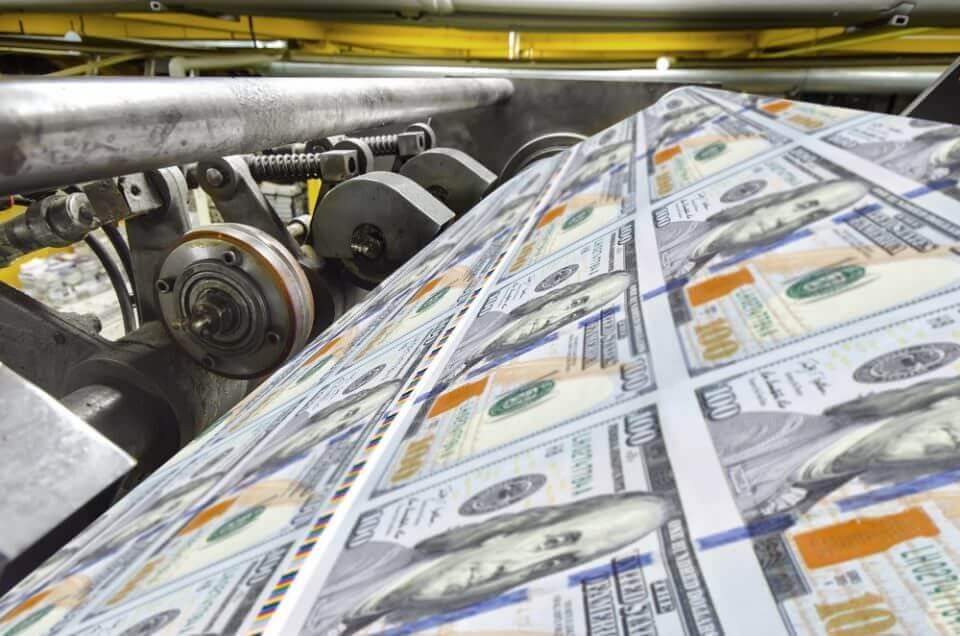
Recent Financial Turmoil
Needless to say, a lot of money has been printed into existence in the last couple of years since COVID. In response, the U.S. government has spent over 4 trillion alone on COVID relief. That’s only in one area, not including defense spending.
In most recent news, the U.S. has hit its debt limit (borrowing limit) of $31.4 trillion. Well, the only solution is to raise it again and shove it back under the rug. It’s no different than the other 78 times it’s raised since 1960. It’s no laughing matter. From the words of the U.S. Treasury, “Failing to increase the debt limit would have catastrophic economic consequences. It would cause the government to default on its legal obligations – an unprecedented event in American history. That would precipitate another financial crisis and threaten the jobs and savings of everyday Americans – putting the United States right back in a deep economic hole, just as the country is recovering from the recent recession.” Unless the U.S. wants a free-for-all stock market crash, the debt limit needs to be raised. Imagine the gold prices when that happens.
If that’s a tough pill to swallow, the U.S. is not able to account for $21 trillion missing from the government. Imagine of a corporation failed to pass such an audit?
Sounds a bit unconstitutional… “No money shall be drawn from the treasury, but in consequence of appropriations made by law; and a regular statement and account of receipts and expenditures of all public money shall be published from time to time.” – Article I, Section 9, Clause 7, U.S. Constitution
The Case (Against) CBDCs
To put it into layman terms, Central Bank Digital Currency (CBDC) is programmable money. There’s no need for printing or the mint, it’s all on the digital wallet. Forget paper currencies, CBDC is the ultimate fiat money. Some say it could lead to an eventual global currency. Speculation aside, many foreign central banks are beginning to test CBDCs, as reported by the International Monetary Fund (IMF).
Sounds like science fiction?
According to the Bank of International Settlements, 90% of central banks are involved in some sort of CBDC experimentation.
If CBDCs become the next form of fiat money, the chances of going back on the international gold standard become even slimmer. Plus, the Federal Reserve Bank will have an even easier job for making money out of thin air. Joking aside, CBDCs give more of a reason to accumulate hard assets like gold and silver coins.
Return of the Gold Standard?
Just because the U.S. and every other country has abandoned the gold standard, that doesn’t mean it’s been totally wiped off the planet.
Zimbabwe and Gold Coins
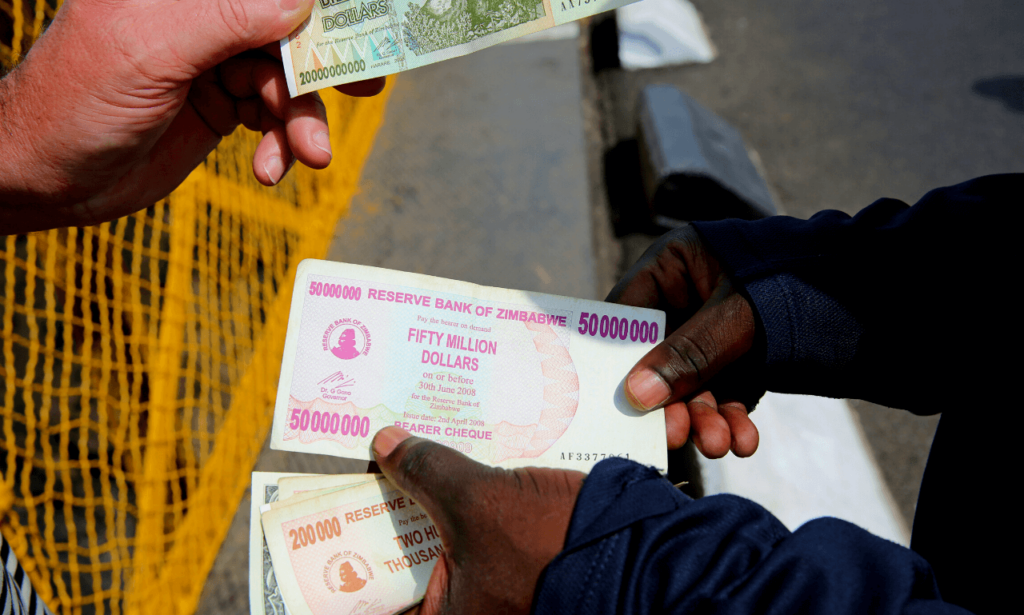
During the past year, Zimbabwe introduced gold coins to be used as currency. With the country’s currency in free fall since 2008, their government is doing just about anything to suppress inflation. It’s to the point that many retailers in Zimbabwe don’t accept their own national currency.
Conclusion
Was leaving the gold standard detrimental to our society?
For thousands of years, civilizations have used precious metals to prop up their financial systems. It began with the bimetallic standard, and has evolved to the fiat money of today. As we’ve seen in recent years, inflation has taken a toll on our currency. Central banks have no choice other than to tighten rates and slow down spending, and therefore, the drawbacks trickle down onto the average citizen.
There’s a reason why so many wise investors use gold bullion and silver to hedge themselves against inflation. In many cases, the value of precious metals will rise as the dollar declines!
Until next time, happy stacking!
This post is written by Scottsdale Mint on March 15, 2024.
